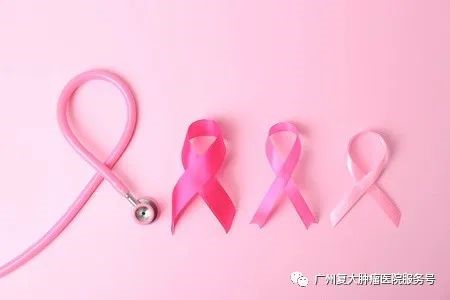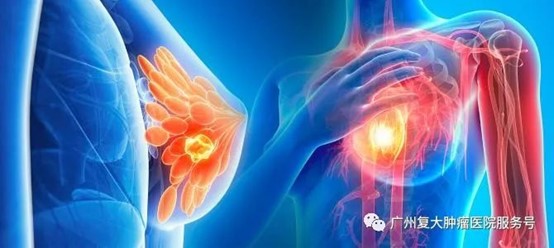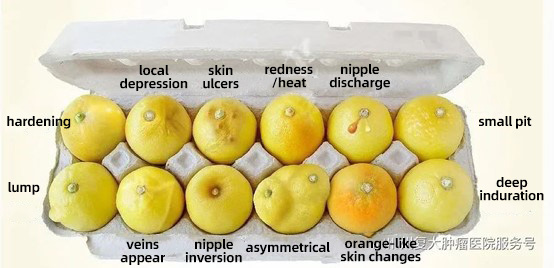Did you know that every October is World Breast Cancer Awareness Month, and every October 18th is International Breast Cancer Awareness Day? Additionally, the third Friday of every October is Pink Ribbon Day, a day dedicated to spreading awareness about breast cancer.

Breast cancer is the most common type of cancer that threatens women's physical and mental health, with increasing numbers of cases being diagnosed in China every year. The fast-paced lifestyles have posed a threat to women today with pressures from both work and life, many of them often neglect their own breast health, leading to various breast diseases, including breast cancer.

Fortunately, with increasing breast cancer awareness among women and advances in medical diagnosis and treatment techniques, the early detection rate of breast cancer has significantly improved in clinical practice. For early-stage breast cancer patients, options such as breast-conserving surgery (also known as breast-conserving therapy) or minimally invasive treatments like cryoablation are available, which can not only achieve good treatment results but also minimize any impact on the original appearance and function of the breasts, reducing the impact of breast cancer on patients' lives after treatment.
For those patients who are diagnosed with advanced breast cancer, however, there are still various treatment options available with the development of comprehensive treatment methods such as targeted therapy, endocrine therapy, immunotherapy, traditional Chinese medicine treatment, and local minimally invasive treatment. The majority of these patients can also achieve good treatment results through appropriate treatment options. As for the vast number of healthy women, understanding and preventing breast cancer should be the top lesson to learn.
Facts About Breast Cancer
Signs of Breast Cancer
• Rapidly increasing breast lump
• Bloody discharge from the breast
• Rough, scaly breast skin
• Inverted or retracted nipple
• Axillary lymph node enlargement

Breast cancer patients often found with a breast lump, which is typically hard, single, and irregularly shaped with a rough surface. Most breast tumors course not pain, although some may be accompanied by varying degrees of dull pain or prickling.
Who is at Risk for Breast Cancer?
The cause of breast cancer is rather than clear, but there are certain patterns in its occurrence. Women with the following risk factors are more susceptible to developing breast cancer:
• Having family history of breast cancer - particularly if mother, daughter, or sister has been diagnosed with breast cancer.
• Early menarche (before age 12) or late menopause (after age 55).
• Late childbearing or no breastfeeding experience.
• Long-term use of exogenous estrogen.
• Carrying susceptibility genes of breast cancer.
• Biopsy-confirmed atypical hyperplasia of the breast.
• Other factors such as post-menopausal obesity and long-term excessive alcohol consumption.
How to Detect Breast Cancer?
Early breast cancer may not present obvious symptoms or signs, which makes it difficult for women to notice and delays early diagnosis and treatment. The way to detect breast cancer at an early stage is to receive regular breast cancer screening. Here are some suggestions:
For average women:
• Do a breast self-examination monthly starting from age 20;
• Have a clinical physical examination every three years from age 20 to 29, and annually after age 30;
• Have a X-ray examination (mammography) starting from age 35, with a mammogram every other year until age 40, and every 1-2 years after age 40;
• Have a breast ultrasound every year starting from age 30.
For women at high risk of breast cancer:
• breast self-examination are encouraged while having clinical physical examination once a year starting from age 20. After age 30, consider having a breast MRI.
Breast Self-examination
• Check in front of the mirror. Stand with your arms hanging on both sides and observe the appearance of the breasts.Look for any irregular contours, skin dimpling (similar to orange peel), or small indentations. Press to see if there any liquid leaking from the tip. If you observe any of these symptoms, it is recommended to visit a doctor as soon as possible.
• Check in supine position. Lie down on your back and use your fingers to circle around the nipple in a clockwise direction while pressing firmly against the skin. During the examination, apply pressure evenly and make sure that you can feel the bones of the ribs behind the nipple. If you feel any lumps or bumps, it is necessary to have a follow-up appointment with your doctor.
How to Prevent Breast Cancer?
Based on the epidemiological investigation and analysis of breast cancer incidence, the risk of developing breast cancer can be reduced by the following measures:
• Establish a healthy lifestyle and eating habits. Pay attention to balanced nutrition, maintain physical exercise, avoid and reduce factors such as mental and psychological stress, and keep a happy mentality.
• Actively treat breast diseases such as atypical hyperplasia.
• Do not use exogenous estrogen without proper authorization.
• Do not chronically drink excessively.
• Breastfeeding.
Of course, if you notice any changes in your breasts, you should not worry too much because most breast changes are not caused by breast cancer. However, you still need to go to the hospital as soon as possible to rule out the possibility of breast cancer.